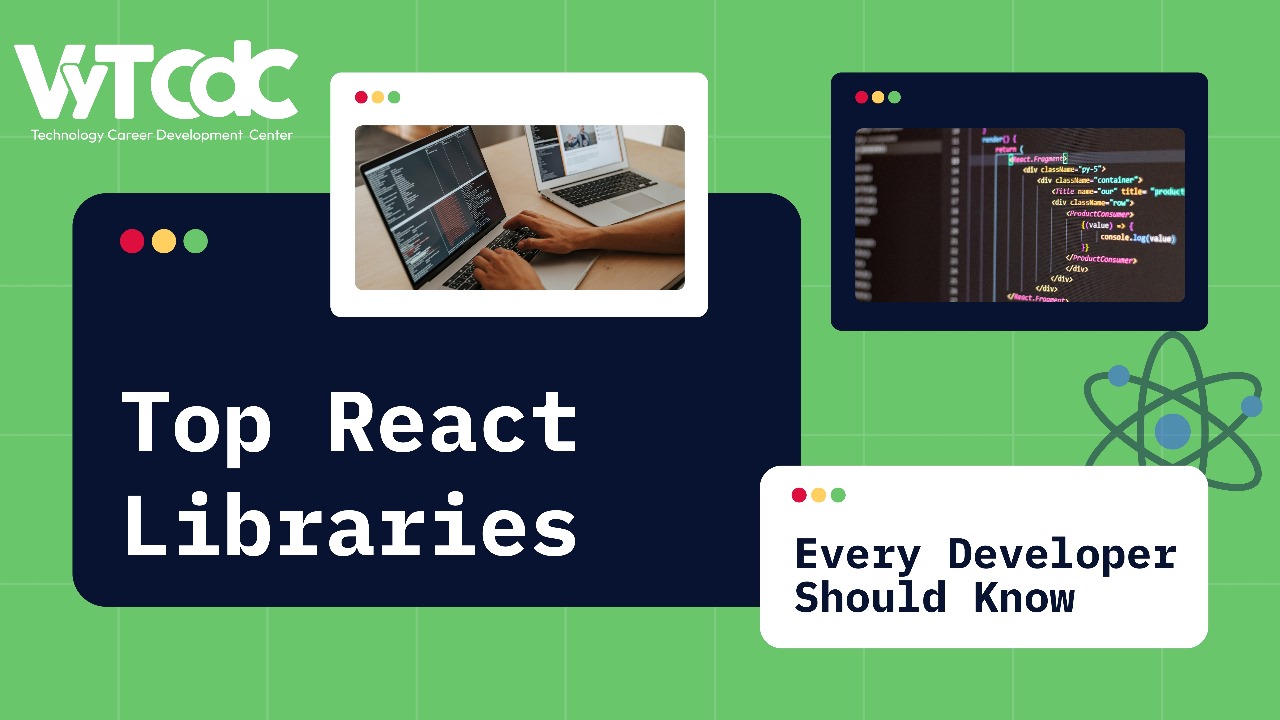React has become one of the most widely used libraries in the world of front-end development. Its flexibility, component-based structure, and strong community support make it a powerful tool for building interactive user interfaces. While the core React library offers a solid foundation, developers often turn to a variety of complementary libraries to supercharge their projects. Here’s a list of essential React libraries that every developer should know, whether you’re just starting with a React.js Certification Training or already a seasoned professional.
React Router - Navigation Made Easy
React Router is a crucial library for managing navigation in single-page applications (SPAs). It allows you to map different URL paths to components, ensuring smooth transitions between views without reloading the page. This tool simplifies routing logic, handles nested routes, and provides access to essential features like route protection and lazy loading. Most importantly, it keeps your application’s navigation seamless and user-friendly.
Key Features:
- Declarative routing for dynamic components
- Lazy loading for faster initial loads
- Route protection and nesting for enhanced security and organization
Redux & Redux Toolkit - State Management at Scale
When working on large applications with complex state requirements, Redux can help you keep your data organized. Redux Toolkit, a more recent addition, simplifies Redux setup and reduces boilerplate code, allowing you to set up and manage your application state with minimal effort. The combination of Redux and Redux Toolkit is widely regarded as a best practice for managing the global state in React applications.
Key Features:
- Predictable state management
- Debugging tools and DevTools integration
- Middleware support for handling side effects
React Query - Data Fetching Simplified
React Query is a powerful library that manages server-state in React applications. It simplifies data fetching, caching, and synchronization, allowing you to fetch, cache, and sync server data without writing custom logic. This is especially helpful in applications with frequent server requests and dynamic data updates.
Key Features:
- Auto-caching and prefetching of server data
- Simplified asynchronous data fetching and handling
- Reduced boilerplate for managing server state in components
Styled Components - Modular Styling for Components
Styled Components enable you to write CSS directly in your JavaScript, keeping the styles tied to specific components. This library allows for modular, component-level styling without worrying about global style conflicts. It’s widely adopted due to its support for theme management, dynamic styling, and ease of integration with React.
Key Features:
- CSS encapsulated within components
- Theme support and dynamic styling
- Cleaner, modular approach to styling components
Formik - Forms Made Easy
Handling forms in React can be tricky, especially in complex applications. Formik is a library designed to simplify and improve form management. It manages form states, validations, and submissions, letting you focus on the user experience. Formik is perfect for projects with intricate form validation requirements, and its API integrates smoothly with React.
Key Features:
- Simple form state management
- Integration with Yup for validation
- Ease of handling form submissions and errors
Material-UI (MUI) - A Pre-Built Component Library
Material-UI (MUI) is a popular library that provides a collection of pre-designed React components based on Google’s Material Design principles. It helps developers build attractive and responsive interfaces without custom styling. MUI’s components include buttons, cards, modals, and more, giving you a robust toolkit for creating professional-grade UIs.
Key Features:
- A comprehensive suite of Material Design components
- Customizable themes for consistent branding
- Extensive documentation and strong community support
Framer Motion - Advanced Animations
Framer Motion is a library that makes it easy to add sophisticated animations to React applications. It provides a simple yet powerful API for creating smooth animations, transitions, and interactions. With Framer Motion, you can take your user experience to the next level by integrating animations that are both engaging and performant.
Key Features:
- Easy-to-use animations and transitions
- Gesture-based animations and scroll-linked animations
- Support for complex animation scenarios
React Testing Library - Simplified Component Testing
Testing is vital to building sturdy applications. The React Testing Library focuses on testing UI components from the user’s perspective, encouraging best practices by minimizing direct manipulation of React’s internals. With this library, you can ensure your components render correctly, handle interactions, and integrate seamlessly within your application.
Key Features:
- Simple, user-focused API
- Compatible with Jest and a variety of testing frameworks
- Helps simulate real user interactions
Recharts - Data Visualization for React
For projects that require data visualization, Recharts provides a simple and efficient way to create interactive charts and graphs. Built on top of D3, Recharts makes it easy to visualize data without needing in-depth D3 knowledge. With support for various chart types, customizable options, and ease of integration with React, Recharts is perfect for building dashboards and reporting tools.
Key Features:
- Multiple chart types (bar, line, pie, etc.)
- Customizable and responsive components
- Ease of integration with React data
Next.js - The Complete React Framework
Next.js is a robust React framework that simplifies server-side rendering (SSR), static site generation (SSG), and client-side rendering. With Next.js, you get built-in routing, optimized performance, and excellent SEO, making it a top choice for building production-ready applications. It’s an ideal option if you’re pursuing a React JS course with a certificate and want to learn about full-stack development with React.
Key Features:
- Hybrid rendering (SSR, SSG, and client-side rendering)
- File-based routing for ease of navigation
- Built-in optimizations for performance and SEO
React Hook Form - Lightweight Form Handlin
Another popular option for form handling, React Hook Form, focuses on simplicity and performance. It provides a lightweight, efficient way to manage forms in React without relying on external state management libraries. With its intuitive API, React Hook Form minimizes re-renders and supports integration with validation libraries like Yup.
Key Features:
- Minimal re-renders for optimized performance
- Intuitive API with support for form validations
- Integration with other form validation libraries
Conclusion
These React libraries are indispensable tools for any developer looking to build modern, scalable, and high-performing applications. Whether you’re learning through a React JS online certification or looking to deepen your expertise in React, each of these libraries will enhance your development toolkit. From simplifying state management to improving the user experience with animations and forms, these libraries offer solutions for almost every challenge in React development. Embracing these tools will make you a more effective React developer and enable you to build projects with greater efficiency and quality.
Established in 2002, VyTCDC has been vy ventures’ premier technology incubator since 2002. It offers transformative technical training and internships across its specialized entities.






